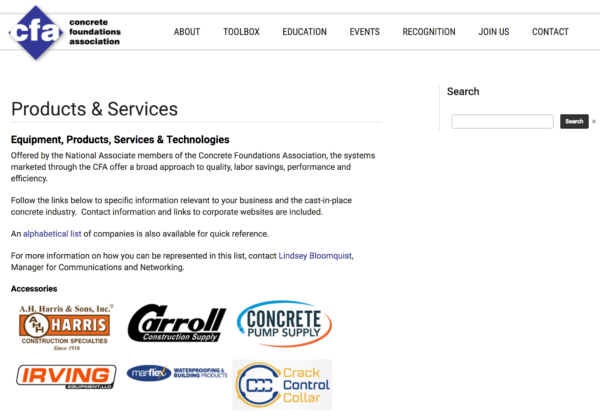Safety 24/7
Last fall a truly “by the book” safe GC tendered a project. Submission of our OSHA training certifications and Safety Program was part of the subcontractor selection process. The submittal included a full-page list of questions about our safety practices. I met with the safety officer on the jobsite and explained that I chose to fill in the questions honestly and if my honesty disqualified us, I understood.
Our first day on the job was a real eye opener. The GC’s employees started the day with stretching exercises, immediately followed by task assignment and checklists for necessary tools and PPE along with instruction on the proper procedure for both the task and the use of the specific PPE. Seeing this left me with an almost “guilty” feeling. Had I been putting our employees in harm’s way and was it time to review our procedures?
After two days of prep work, we were ready for the first concrete placement. It was 4:30 a.m. and I was pleasantly surprised when I saw my son informing everyone on location of all the exits, water, and bathrooms, along with the site hazards. Many of the safety tasks that I felt we lacked, we were practicing. The GC made this point to me, “The two most important things that make you a safe company are attitude and organization.”
Days later, I recalled the time when I first received exposure to an “attitude toward safety”. My father was a lineman for a large utility company who provided safety classes to all employees and their families. Before turning 10 years old, I knew CPR, the Heimlich Maneuver, and the potential hazards of every room of the house. When I married, my wife described her safety experiences from hundreds of graphic reports her father, a police chief for 25 years, brought home. Together, we preached to our children (more often than they would have liked to hear) the importance of safety in every aspect of their lives.
I’ve always felt we were an organized and safe company, but many years ago fellow CFA member, Van Smith, gave me a great slogan to remember, “100% ready, 100% of the time.” This is a quote that has always stuck with me.
There is no guarantee that accidents won’t happen, but there is a lot more to safety than teaching our employees about job hazards. As stewards of the concrete industry, we owe it to our businesses, our employees, and their families to teach and practice safety 24/7. An accident of a family member at home affects us and our businesses as much as one in the field. Safety is achieved by how well everyone pays attention to it; we must continue to spread the word. I can assure you that an attitude of “safety costs money” means in the end, you are losing not gaining. In the end, the small monetary and time investment combined with attitude plus organization (or 100% ready, 100% of the time) equals profit.
I believe special awards should be given to companies that teach safety 24/7 to the whole company family, something that I am guilty of not putting into practice…yet.

Dennis Purinton, Purinton Builders Inc., CFA President 2016-18, purintonbuilders@yahoo.com
March Madness
Let’s face it, I’m about this entirely and I’m guessing many of you are too. I don’t have many conversations it seems without someone having a college team that inspires them. Now, maybe you’re not a basketball fan and prefer wrestling or football, but you have to admit that there is a frenzy, a delirium, a craze that takes place heading into and through March.
It’s about competition, right? After all, the reason why basketball gets insane in March is that we have developed an appetite to see success and no matter if our team is in the contest or not, we become part of the electricity wanting to see the upset or feel the passion. I sense business is like that in many respects and March brings about a different madness for each of you.
Speaking as the voice of the cast-in-place concrete industry, the CFA recognizes that most you are in basement markets. This means you’re located mostly where there is a dramatic change of the seasons taking place. Normally the deep frost is leaving the ground and the ice is thawing on the stack of quotes you’ve put out there. These days, however, the markets are reporting very little slacking off during the past few months and project schedules are already stacked up as high as the quotes. How do I know this is true? I get this from every conversation I have but I also see it in the types of questions that are being asked.
Already this year we’ve been involved in efforts to justify the presence of chlorides in concrete; find alternative design provisions for walls; helped develop a position on fall protection safety; connect interested buyers to available sellers for used equipment and forms; identify sources for the latest software solutions; troubleshoot mix design and delivery problems; and help builders identify the latest technical advantages of industry standards. We’re busy because you are busy…and that is a good thing.
The number one aspect of my job each and every week is interaction with contractors. Some of you read this letter and know I’m talking about you past, present and future. Some of you, however, are receiving this magazine complimentary and you’ve yet to connect with the advantages of having an Association at your disposal to make your company bigger than it is. Is this madness? If it is, then I’m okay with it and I’m ready for it to get even more so. What problems are you facing? Why are you facing them alone? Why are just using “Google” to find the answer when it is proven that Google doesn’t get it right. Can your “Alexa” answer every question you throw at it? I can just about guarantee that the CFA can because, as I remind everyone I talk with, it is never what you know…it’s who you know.
Happy concreting. Go Cyclones!
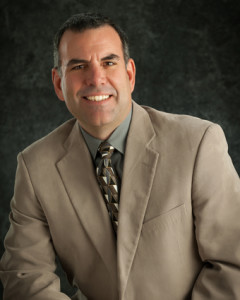
CFA Executive Director, James Baty, jbaty@cfaconcretepros.org
Why Attend Convention
Between podcasts, YouTube tutorials, webinars and google.com, why would I invest the time and money to attend a convention? What will I learn there that I can’t learn online? If this is your mindset, I challenge you to take your company to the next level and explore the real benefits of attending your industry events, namely, the Concrete Foundations Convention.
In 2016, nearly 30% of CFA member companies had at least one representative from their company present at the Concrete Foundations Convention in Myrtle Beach. Nearly 80% of these attendees made a new connection that will help them grow professionally, over 60% discovered a new product or tool that will save money on their next job, and close to 80% learned something that will improve the safety of their crews and projects.

Attendees make many new acquaintances during the Concrete Foundations Convention in events like “Speed-Networking” seen here from Kalihari in Sandusky, Ohio in 2014
It is not surprising that networking is the primary reason that people attend industry events. The Concrete Foundations Association (CFA) recognizes the importance of face-to-face networking, and makes certain to create an atmosphere conducive to this at every convention. The Concrete Foundations Convention, which will take place July 20-22 in Nashville, TN, will kick off with a happy hour with exhibitors, followed by the annual Kick-Off Bash complete with live music, dinner and networking with industry leaders. Whether you are catching up with old friends, finally meeting that vendor that you’ve worked with for years, talking through challenges with a peer or making new connections, the Concrete Foundations Convention is where it all takes place. In addition to the annual kick-off bash, the CFA provides numerous networking opportunities through out the convention. This is one-on-one time with the leaders in your industry that you won’t find online.
Another benefit of attending your industry event is to get hands-on with the newest products and technology that the industry has to offer. Post event surveys show that CFA convention attendees discovered new products or technology that will save them time and money and improve the look of their next project, found products that they never knew existed, and even learned something new about products that they already have. Too often people see an exhibit hall as a room full of sales pitches. Again, if this is your mindset, you are missing out on another opportunity to better your company. Exhibitors at the Concrete Foundations Convention are there to offer products that will alter the way you do business, increase your profitability and put you leaps and bounds ahead of your competition.
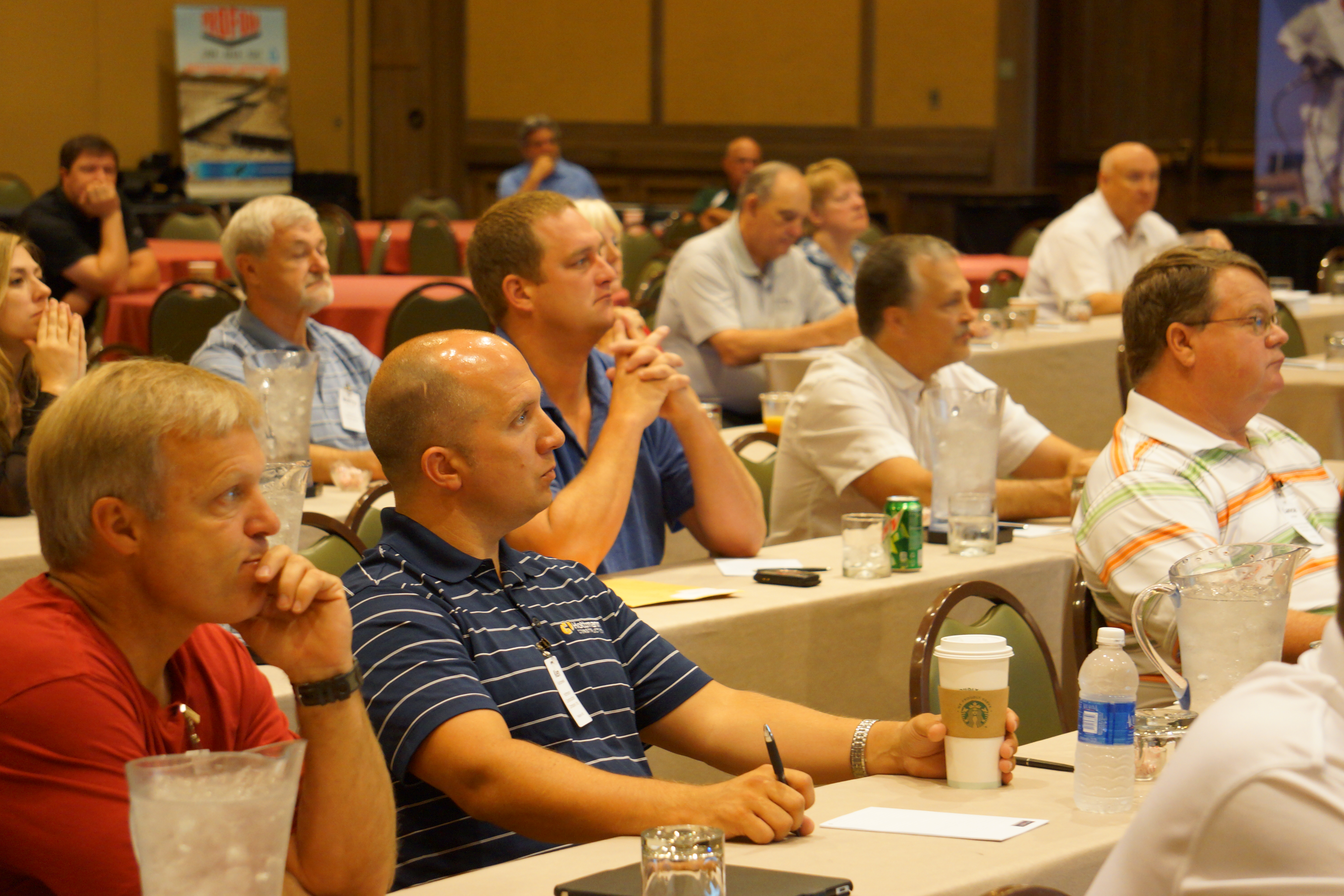
Attendees taking part in a marketing presentation during the 2013 Concrete Foundations Convention at the Hyatt Tamaya in Santa Ana Pueblo, NM
Amongst the networking opportunities and game changing products and technology, the education that is offered at the Concrete Foundations Convention is invaluable, and catered specifically to cast-in-place contractors just like you. Questions and concerns that are brought up in the seminar rooms foster unique discussions that challenge industry standards and resolve common discrepancies. From business management to foundation fundamentals, you are sure to learn something at convention that will make you a better leader, a better boss, a better employee and a better company.
Opportunities to better your company and increase profitability are right in front of you. Take advantage of these opportunities; invest in your future, network, become educated and evolve into a more profitable company. So, we’ll see you in Nashville, right?

ABOUT THE AUTHOR
Lindsey Bloomquist, Manager for Communication and networking for the Concrete Foundations Association (CFA), works to communicate the available tools and benefits of a CFA membership to the industry, and provide networking opportunities that build professional relationships between contractors and industry leading suppliers and manufacturers. Bloomquist also works closely with industry suppliers and manufacturers to increase exposure within the CFA through advertising, sponsorships, exhibits and networking. Reach Lindsey at lbloomquist@cfaconcretepros.org.
“The professional relationships that are established are vital to the success of this association and its member companies. Not only do these interactions foster healthy competition that fuels innovation, but they create lasting partnerships that are beneficial to both the contractors and suppliers.”
Top Safety Awards Call For Entries
The Board of Directors for the Concrete Foundations Association has created a Top Safety Awards program to recognize contractors in the industry committed to maintaining safe working environments on their job sites.
In 2011, OSHA rescinded the exemption from fall protection for residential construction, including that of residential foundation construction under the belief that significant safety violations and risks plagued the industry. This program serves to establish record of the commitment to safety and the practical influence that commitment has on the workplace injury rate. The following awards are available to CFA members in these classifications:
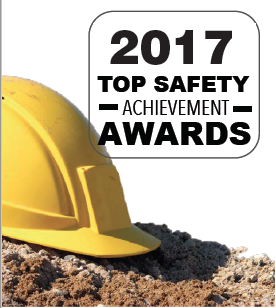 Best Overall Safety Achievement Award: recognizes the firm with the lowest incident rate in 2016. Multiple companies with a zero Incident rate will result in the award given to the company with the highest number of annual work hours.
Best Overall Safety Achievement Award: recognizes the firm with the lowest incident rate in 2016. Multiple companies with a zero Incident rate will result in the award given to the company with the highest number of annual work hours.
Most Improved Safety Achievement Award: recognizes the firm with the most improved incident rate in 2016 from numbers they submit for 2015.
Zero Lost time Accident Achievement Award: provided to all submitting companies who achieved an incident rate of zero for 2016.
Certificate of Recognition: awarded to all companies whose incident rate fell below the national average for residential foundation contractors, a number made available by the Bureau of Labor Statistics.
Submissions are required at CFA Headquarters by June 2, 2017. All entries must be signed by person submitting the form and the owner, president or CEO, or risk disqualification. Winners will be announced at CFA Convention 2017 in Nashville, TN on July 22, 2017 during the Awards Gala. Contractors with a fatality in 2016 are ineligible for an award but should submit for purpose of record.
Submitting information for the annual Safety Program Awards is a relatively easy process. Each company submits the Incident Rate information directly from their OSHA logs using the quick form CFA provides. This, along with information about the type of program you offer and the ways you deliver it round out the picture of your company’s attention to detail for consideration. The CFA recognizes contractors according to three different types of concrete market as well as three different sizes of company within each market.
Download submission form by going to the Recognition tab at CFA’s website or directly at http://cfaconcretepros.org/safety_application_2017/.
2016 winners…
BEST OVERALL SAFETY ACHIEVEMENT FOR 2015:
- CUSTOM CONCRETE COMPANY, INC. – All Concrete Contractor, > 250k work hours
- STEPHENS & SMITH CONSTRUCTION CO., INC., – Turn Key Contractor, > 250k work hours
- THE BARTLEY CORP. – All Concrete Contractor, 100k to 250k work hours
- WALRITE, LLC. – Residential Foundation Contractor, < 100k work hours
- SOLID CONCRETE WALLS, INC. – Residential Foundation Contractor, 100k to 250k work hours
- MICHEL CONCRETE CONSTRUCTION – All Concrete Contractor, < 100k work hours
MOST IMPROVED SAFETY:
- STEPHENS & SMITH CONSTRUCTION CO., INC.,
ZERO LOST TIME ACCIDENT AWARD:
- WALRITE, LLC AND
- MICHEL CONCRETE CONSTRUCTION, INC.
Who will win in 2017?…..Entries due by June 2
Millennials in the Workforce
Millennials: we have all heard the word used in some way or another. In the workforce, it can carry a negative connotation among employers. Lazy, high maintenance, ignorant, entitled, and self-righteous are just a few of the words used to describe them. But this word carries with it another implication that the world is changing at a faster rate than ever before, driven by this generation of people who think and work differently than generations before them. Why? Because the world they grew up in witnessed unheard of technological advancements that fundamentally changed everyday life. The lasting cultural, social, and economical effects these changes brought to the world are now affecting businesses in a huge way as millennials are taking over the workforce. Employers across the country are now questioning how to handle it, because whether they like it or not, millennials will soon be our country’s new leaders.
The Millennial Challenge
Millennials are defined as anyone born roughly between 1980 and 2001. It is estimated that approximately 80 million of them have already entered the U.S. workforce. In 2014, around 36% of the workforce was made up of millennials, and it is estimated that by 2020, nearly 46% of the workforce will be comprised of this generation.[i] Millennials now comprise the largest segment of the U.S. labor market. Generation X (the generation before millennials), as well as the “Baby Boomers,” are quickly on their way out. With these numbers in mind, employers are well aware that measures need to be taken to maximize the potential of the growing number of millennials in their workplaces. However, an efficient coexistence of these two generations has proven to be a difficult task for a variety of reasons. Millennials have different work values and priorities, they define success in different ways, they use new software and technology to get projects done, and they possess unique strengths that can be difficult to harness for employers. These stark differences between the two generations have caused a friction in the workplace that has increasingly frustrated employers and stalled productivity. Simply put, employers find millennials difficult to manage.
Where do these differences come from? 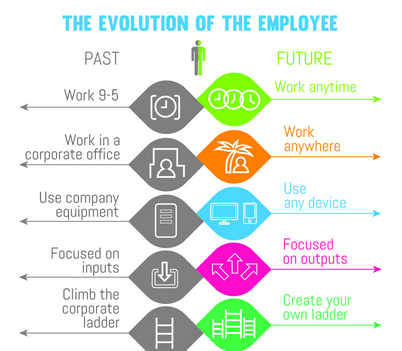
Millennials grew up in a world that gave them access to extremely advanced technology that is used for instant communication, as well as endless platforms of social media applications. Despite the fact that these technological advances have proven to greatly enhance our communication capabilities and have given us quick access to infinite information, there are negative effects that have impacted an entire generation of people. Studies have shown that social media outlets such as Facebook and Instagram, as well as something as simple as receiving a text message, are triggers for a release of dopamine in the brain similar to that of activities such as drinking alcohol or smoking. In other words, they are highly addictive media outlets and are often relied upon during times of stress or anxiety. These habits have restructured what it means to be a “friend,” and have placed less value on true, meaningful relationships. The result is isolation, hidden by a deceiving social media presence that gives the illusion of a large network of friends. This isolation is increased by a tendency for millennials to “filter” their lives through social media, providing their peers the appearance that they are happy when in fact their reality is quite the opposite. This illusion has created a habit among millennials to turn to these dopamine-releasing devices, rather than actual people, during times of stress. Their presence on social media has left this generation feeling constantly evaluated by their peers through the lens of social media. Perhaps the most concerning part of this is the lack of an age restriction on social media. Many millennials have simply never known anything different. Because of this, they typically place more value on the opinions of their peers than the opinions of their superiors. This tendency has now carried over into the workforce as millennials are taking over this space, and because they have become so accustomed to this social-media driven isolation, it is more difficult for them to trust their leadership. Making matters worse is their ability to access and research infinite information at the palm of their hand, leading them to second guess much of what they are taught by upper-management levels. The cycle of being both isolated by and addicted to their social media-induced technology has left millennials trusting there devices more than they trust real people. This disconnect is one of the largest driving forces behind employers’ difficulties managing the millennials.
Studies also show a difference in priorities among millennials when compared to their preceding generations. Those in Generation X typically have a more linear approach to their workplace priorities; they expect a managed flow of information, a strong sense of job security, income that matches their work load, and an overall structured business style. Millennials focus more on a collaborative, unstructured work environment that provides a sense of fulfillment or personal enrichment. A flexible work schedule and a healthy work-life balance are also highly prioritized among millennials. Yes, income is a top priority, but millennials also place a larger emphasis on making a real impact or doing “meaningful work” than previous generations do.[ii] While Gen X’ers focus on the task at hand and take one route to finishing the job, millennials will tend to be more outwardly focused in their approach and will be influenced by complex networks of people that include those outside of their workplace. These tendencies can have both good and bad consequences, yet the main point of contention arises from the generational gap: one generation is trying to manage another, yet the two of them differ drastically in their priorities and work strategies.
What Employers Can Do
Understanding what millennials want from their employers is the first step in combatting this generational gap issue. Diane Spiegal, CEO of a corporate training and leadership development company called The End Result, has done extensive research on this topic. She has found that millennials want the following four things from their employers:[iii]
- Coaching: Millennials want to know what is expected of them. Coaching and direction are essential to getting the most out of a millennial. This will help establish the trust between a manager and a young person in the workplace, which can be difficult to achieve as previously mentioned. One of millennials’ biggest priorities in the workforce is making a meaningful impact, so receiving regular coaching and feedback will help them understand that the work they are given is in fact important and making a difference. Simple emails, texts, or 5 minute conversations are all it takes. The more coaching they get, the more they feel valued and want to impress their leaders. Although millennials typically take a less structured approach to achieving goals, they need systematic coaching to establish what those goals should be in order to reach that sense of accomplishment that they desire. This does not mean employers should hold millennials’ hand and walk them through their job step by step, but rather set clear parameters of what their expectations are.
- Collaboration: Given millennials’ tendencies to be present on social media and constantly being evaluated by their peers, they favor collaboration and team efforts to get projects done. They place a huge value on the opinions of their peers and can be extremely productive in these team environments. Team projects can be utilized by employers to get the most out their millennial employees, yet a clear goal or expectation must be put in place in order to achieve this. A great way to facilitate this would be internal competitions among millennial employees. The competitions help younger employees innovate and collaborate to achieve optimal results. The conversations that are sparked from these competitions are then carried over into real, everyday operations, and many companies have seen great ideas generated as a result of these competitions.
- Measures: Being evaluated is something that millennials are very used to. They grew up being constantly assessed by teachers, coaches, and parents. Even through social media, millennials are used to an evaluation system by tracking how many “likes” they receive on their posts as well as the amount of “followers” they can obtain on their various applications. It is constant benchmarking, and this mindset has carried into their professional lives as well. They want to know where they stand and what their employers think of the job they’re doing. Providing these brief evaluation sessions will increase trust between a millennial and a Gen X manager, because they sense that their leaders truly care about the job that they are doing. It will also further enhance their work ethic. Employers can expect to see better results from their millennial employees if they increase and restructure their evaluation system.
- Motivation: Creating an incentive will maximize results for millennials. As mentioned before, they typically respond more efficiently when a clear goal is established, and when there is a reward for achieving this goal. As obvious as this might sound, employers often times struggle to provide these incentives and lose motivation among their millennial employees. Extra time off, lunch outings or special invites to corporate events are some common examples of incentives that can boost performance and motivation among millennial employees.
Adding to this, the millennial generation places a high value on turning colleagues into friends, and maintaining these friendships outside of the everyday workplace. Businesses can encourage this by organizing out-of-work events that focus on gathering young people in social environments. This is an extremely valuable extension of a company’s culture, which will greatly increase millennials appreciation for the company they work for. Organizing happy hours, charity events, fundraisers, and company gatherings outside of work hours will encourage young people in the workplace to form non-business related relationships. This emphasis on a fun social environment is one of the best ways to build trust with millennials and retain their talent.
Attract. Develop. Retain.
These three steps are nothing new for any employer of any industry. They are all equally important in building a strong workforce. Yet when it comes to retaining top talent, these steps can be modified to best accommodate millennials in the workplace and ensure that employers are taking the right steps to maximize their young talent. It can be difficult for a Human Resources department to adapt to the influx of millennials, yet it should be a top priority for every employer.
Attract
Using technology to attract young talent is an immense advantage for employers. Often times, companies will make videos that “walk” a prospective employee through a typical day in the office or a jobsite. This is a creative way to get millennials engaged and help them envision life at your company. Employers should emphasize a culture of openness as well as opportunity to make an immediate impact. Millennials will be attracted to companies that promote a true need for young talent, as one of their top priorities is to make a difference right away. Compensation also plays a vital role in young talent recruitment. It is estimated that the average millennial is in $20,000 of debt when graduating from college.[iv] Furthermore, most millennials also believe that they will never receive a pension or Social Security check. Offering immediate 401K eligibility will help attract more millennials to your business.
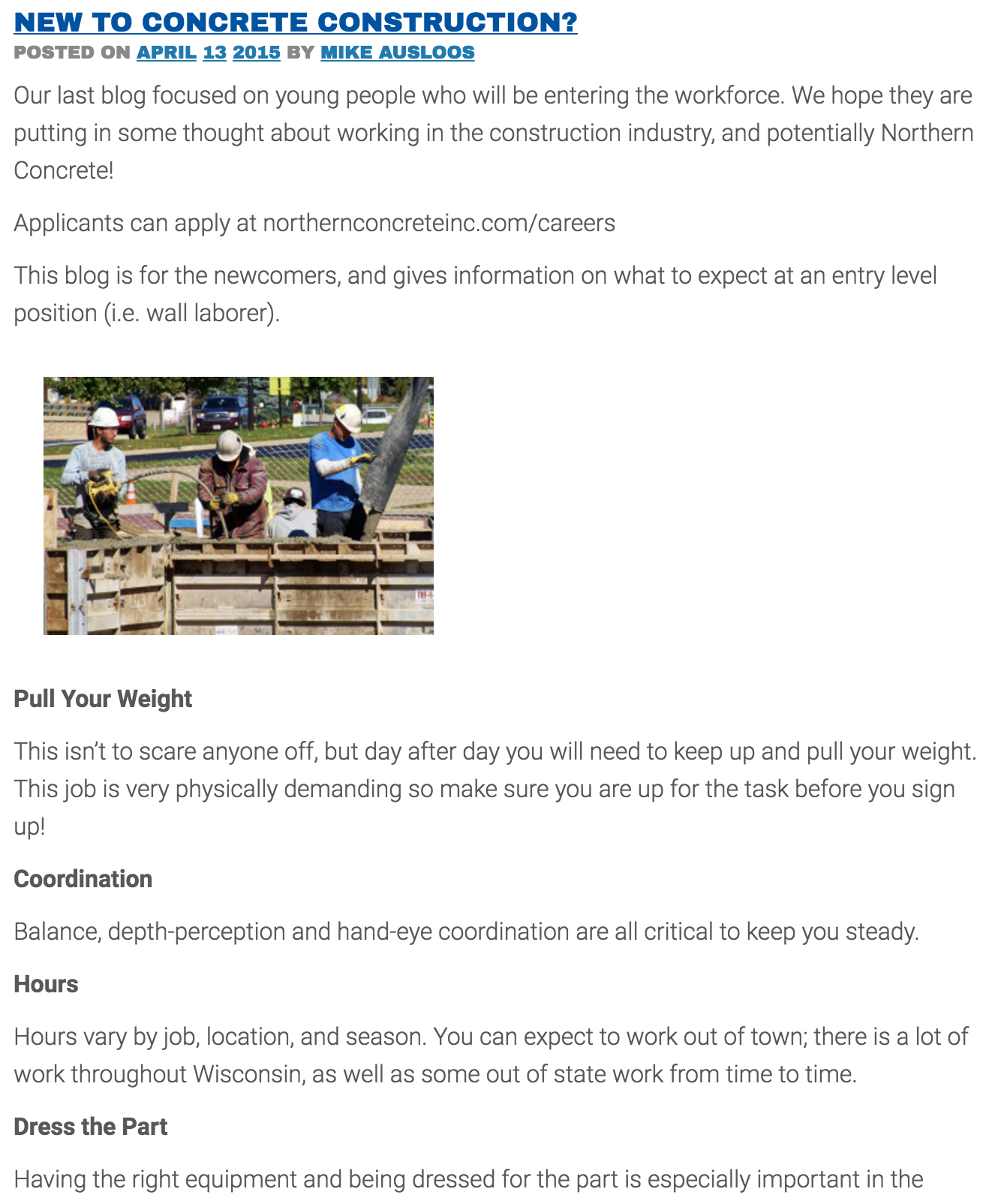
Forward thinking companies are already working hard to acknowledge, understand and educate the millennial workforce. Northern Concrete, Inc., a CFA member from Denmark, Wisconsin, offers a blog where they have spent time discussing this challenging transition at https://northernconcreteinc.com/blog/page/6/.
Develop
Efficient development of millennials will hinge on whether or not the employer is able to generate an understanding between multiple generations in the workplace. There are agencies that offer intergenerational dynamics training, which can be used to strengthen the relationship between managers and millennials as well as build trust among different business levels. Fostering this type of community-based culture will enhance production on an everyday basis. Roundtables and focus groups that encourage an understanding amongst different generations will further encourage a productive working environment and a culture of acceptance. This type of community is something that millennials will certainly appreciate, and companies will have a stronger chance of retaining this talent. Millennials also favor companies that encourage diversity and tolerance, so employers would be wise to make this a priority for their culture if they have not done so already.
Retain
Retaining young talent in today’s workforce has proven to be more difficult than ever. A large portion of millennials were first employed when the recession hit. Being the most inexperienced and youngest employees in the workplace, it was common for businesses to let this young talent go. This created distrust between the millennial generation and employers. In fact, in 2011 it was estimated the 37% of millennials did not trust big business.[v] Millennials are also the most likely generation to quit their jobs. In fact, 44% of millennials would leave their current employer in the next two years if given the choice, and that number jumps to 66% in the next four years. vi Following the recession was a trend among millennials of accepting jobs just to simply pay the bills without finding any real fulfillment, leaving this young generation unengaged and inclined to move from one job to another very quickly. This cycle continues to pose a challenge for managers to retain their best young talent. So what can employers do to combat this? Company culture should be the priority. Millennials favor companies with flexible, relaxed environments that provide opportunities for creativity and new ideas. If they feel their voice is being heard and their ideas taken into consideration, they will be more likely to stay.
The recession also resulted in many businesses de-funding their formalized training and development programs. Because of this, many young people felt untrained and unaccounted for in the office, leaving them more likely to seek other jobs. It is essential for businesses to re-implement these training, development, or coaching programs for their young talent. This is one of the best ways for retaining millennials. Another effective retention strategy is assigning millennials individual mentors that they can rely on for guidance and advice on a weekly or monthly basis. Holding on to young talent is certainly one of the biggest challenges in today’s U.S. workplace, given how common it is for young people to jump from one job to another their first several years out of college. However, if these strategies for retention are planned for and efficiently implemented, businesses will significantly increase their chances of retaining millennials.
Conclusion
The fabric of American business is drastically changing as we know it, as a new generation is beginning to take the lead. This is a national transition that no industry will be able to avoid. With drastic differences between generations driven by technological advancement and reliance, there is certainly a lot to consider. The first step will be to acknowledge that measures need to be taken to foster intergenerational understanding within the workplace. This will be the most essential step in maximizing the massive volume of new millennial employees and the unique talents they bring. Seeing beyond the generalizations that society has placed on millennials and understanding where the differences come from is a pivotal starting point for this process. Millennials pose a challenge to the workforce that it has never seen before, but if the right measures are taken to adjust and adapt, this new generation will be poised lead American business.

About the Author:
ABOUT THE AUTHOR
Tom Garvin is an Account Executive at Arthur J. Gallagher of Chicago. A.J. Gallagher is the broker for CFA’s member-only insurance program for complete and individualized business insurance lines specific to the cast-in-place concrete industry. You can reach Tom at Tom_Garvin@ajg.com or at 312-803-7386.
Sources
[i] Lynch, A. (2008). ROI on generation Y employees. Bottom Line Conversations, LLC. Retrieved from
http://www.knoxvillechamber.com/pdf/workforce/ROIonGenYWhitePaper.pdf
[ii] Nekuda, J. (2011, August 11). What Millennials want. Human Capital Lab. Retrieved from
[iii] Spiegal, D. (2011, July 20). Why hiring Millennials is good for your business. Open Forum. Retrieved from
http://www.openforum.com/articles/why-hiring-millennials-is-good-for-your-business
[iv] Brack, J. (2012) Maximizing Millennials in the Workplace. Retrieved from https://www.kenan-flagler.unc.edu/executive-development/custom-programs/~/media/DF1C11C056874DDA8097271A1ED48662.ashx
[v] Randall, S. (2011). Millennial generation today. SBR Consulting. Charlotte: NC. [vi] Why Millennials Have No Problem Quitting Their Jobs (2016, January). Retrieved from http://fortune.com/2016/01/29/millennials-quit-jobs/The Power of Following Up
You can get many of the things you want in life simply by following up.
Follow up with that prospect that hasn’t returned your call. Follow up with your customer to let them know your men are on the jobsite. Follow up to ensure the concrete is on the way. Follow up with your employee/coworker on the task they are working on. Follow up to make sure your field guys are cleaning up the jobsites when they leave.
Follow up. Be persistent. Try again and again
 Sales is one of the areas we see a terrible lack of follow up. Studies show that 80% of sales are made between the fifth and twelfth contact. Yet, 48% of salespeople never follow up with the prospect even once after the initial contact.
Sales is one of the areas we see a terrible lack of follow up. Studies show that 80% of sales are made between the fifth and twelfth contact. Yet, 48% of salespeople never follow up with the prospect even once after the initial contact.
Thought leader Tony Robbins says it took 16 contacts in 2016 before someone would take notice of you. This has quadrupled from just four contacts ten years ago. With so many things clamoring for our attention, follow up is more important than ever.
Most people won’t follow up when they don’t get a response from someone they’ve contacted. They assume there isn’t any interest by that person and they move on.
However, that may not be the real reason the person didn’t respond. They may not be ready to buy what you offer. They may want to see what their options are, or get another price. Or, they aren’t quite ready to solve their problem.
It’s important to stay in touch with them, though. Many decisions are made when the person can’t procrastinate on their problem any longer. Continue to follow up so that you are there when they are ready to buy.
Oftentimes, they want what you have, they are just so darn busy that they don’t have time to contact you. We have all been in this position. We’ve made up our minds, we just haven’t had a chance to work on the issue. Help that person by continually checking in with them. Make it easy for them to work with you.
The more times a salesperson follows up with someone, their chances of getting a response increase exponentially. It is the responsibility of the salesperson to be persistent and continue to move the conversation forward. Instead of chasing more leads, a salesperson should focus on following up more consistently and for a longer period of time with their current leads. The fortune is in the follow up.
When contractors follow up with their customers, they set themselves apart from all of the contractors out there that don’t follow up. This can mean contacting your customer regarding your schedule, checking to see if they received your invoice, asking about the progress of a project they mentioned earlier, or thanking them for referring your company to someone else.
This type of communication goes a long way in building a long-term relationship with your customer. They become loyal to you, and will refer others to your company.
Following up sometimes means reminding others what you want or expect from them. For example, jobsite cleanliness is important at our company. When we pick up all of the trash on our jobsites, our foundations look complete and professional. A clean jobsite doesn’t improve the structural integrity of our foundations, but it sure makes them look nicer.
This helps our clients because their jobsites look more attractive to their potential buyers. And, we save them money because they don’t have a bunch of trash and lumber that has to be placed in a dumpster.
In order to have clean jobsites, we need to constantly communicate this to our field crews. They have to hear it from us several times to understand why it’s important to us. Then, we have to follow up on our expectations with site visits to ensure they are leaving the jobsites clean.
One of President Ronald Reagan’s mantras was, “Trust, but verify.” The “verify” part he was referring to was the follow up. You have to do the same with your people.
Here are my three rules that will help you with your follow up:
- Follow up in a structured way. Set up a schedule or a simple contact sheet that reminds you when you need to follow up next.
- Follow up for a longer period of time. The longer your follow up process is, the greater chance you have of getting what you want.\
- Follow up by multiple means. The more methods of communication you can use to follow up, the better chance you have of communicating in the way that best suits them. Here are four of the best ways to contact someone:
- Phone call
- Personal visit
Here’s the bottom line. Most people don’t follow up. You can get many of the things you want simply by following up.

ABOUT THE AUTHOR
Doug Herbert is President of Herbert Construction Co., one of the largest residential concrete contractors in the southeast. Doug is a regular presenter for the CFA and World of Concrete. He is the Founder of ProfitableContractor.com where he shows concrete contractors how to reduce their costs and increase their profits with effective sales and marketing systems. Reach Doug at Doug@ProfitableContractor.com.
Around The Association
It’s been a busy start to 2017 in this industry and certainly throughout CFA membership. After a very productive and energy-packed World of Concrete, there have been some great developments and challenging progress made that we are proud to report on.
 New Members
New Members
Everyone is encouraged by the growth of the Association. When a new company joins the CFA, we begin working with them to understand a bit about their company, their market, their product and deliver an introduction to all of you who are members. This is a way of you getting to know a new company and consider a heart-felt welcome, an extension of possible interest in what they are about or an encouragement to consider you a peer for possible networking. A year ago in this same post-WOC issue we published our new members from the preceding year. What better time to continue celebrating these achievements than recognizing this list, the companies that have been included to you in these announcements this past year:
Products and Services
One of the ways to interact with the CFA on a regular basis is to reach out for technology, equipment and product solutions that you may need when new challenges are met. The CFA has updated its online tool for this at www.cfawalls.org in the Toolbox menu. Here you will find a list of the current national supplier members organized by the product types they represent. This is a great way to quickly find something of interest or curiosity and to support the commitment to this Association from so many great companies. If you have trouble navigating this list, you can always contact us at headquarters or info@cfawalls.org for direction.
Taking it to Engineering
What happens when the time you spend educating yourself and proving your knowledge base conflicts with the ideas in your market? CFA member, Tom Werling of North Texas Basements in Fort Worth, Texas is finding new ways to attack that very question. Earlier this year during World of Concrete, Tom became one of the latest to successfully complete the ACI/CFA Certified Residential Foundation Technician Exam. His certification credential in place, he began meeting with design professionals and builders to try and move his market forward in building technology.
“It was hard for me to believe what I was seeing when I moved to this part of the country,” states Werling. “The residential foundations here are one of two types. If they do not have a basement, everything is a typical post-tensioned slab-on-ground. Now, there are always questions and difficulties with those designs and expansive soils just don’t respond the way a designer expects them to. But the real problem is the foundations with basements. I’m up against a market precedence that consists of a trench excavation filled with concrete and floated steel bars and then dugout in the center to reveal a basement space and a rough foundation wall. There is no code enforcement and really, practical knowledge is set aside with this practice.”
Rather than completely tossing in the towel or joining in, Tom has decided to begin laboring on a high road. He is using platforms like the Dallas Build Expo and other educational opportunities like an Annual Convention for the code officials in the region to deliver seminars about foundations. His presentations range from 1-hour snapshots to 2- and 3-hr informational seminars. What are his goals? “I want them to see together, as a group, the way current codes are written and then engage in dialog about why these prescriptions are being followed and what can be done to bring about change,” states Werling. “The foundations here have so much potential that is being missed and so many problems that are being created.
CFA Hotline ‘hotline@cfawalls.org‘
Networking is truly the key to success as a CFA member and here are some examples of topics our members find using the Hotline…
- Keyway Forming Advice — A member asked, “Looking for advice in making an inverted keyway in a footing? The top has to be open so we can add the pvc bulb waterstop. Not to mention there is a fence of bar on either side of the keyway. See the detail for more information.” They provided an image of a typical detail to help with the visualization. Affirmation from multiple contractors on the problems that can be found trying to resolve the detail as presented resulted in a better conversation with the customer.
- Time Keeping Solutions — A member asked, “We use QuickBooks and payroll in house, but have a time consuming process of tracking hours and cities in excel and then transferring those hours into QuickBooks. How are others handling this? Immediately experiences with a variety of products came through replies and both the member and those participating were introduced to six different options with a variety of feedback on each.
- OSHA Gas Can Labeling — A member asked, “OSHA has been requiring that our fuel cans need to be labeled. The color of the can no longer matters. Stickers fall off and marker will just wipe off if you spill fluid on it. Do you know of any other methods to mark the cans or do you know of a brand that has them pre-labeled?” Again, multiple responses were received, some with photos showing solutions and others with links to trusted suppliers of possible solutions from members who knew this regulation from experience and the frustrations noted by the inquiring member.
The hotline has become a very useful tool for members to use and the volume of inquiries continues to increase. There are no requirements for amount of participation or even to participate. Being part of the conversation as a listener is as possible as a contributor. The key is making your participation intentional so that you can learn from your peers. The challenge actually is found in not participating because you will find opportunities to provide your input and ask your own questions.
Want to know more about the benefits of membership or becoming engaged in some of these programs? Contact CFA Headquarters through the website, www.cfaconcretepros.org, by calling toll-free to 866-232-1748 (CFA-WALL) or by emailing CFA’s Executive Director, James Baty to jbaty@cfaconcretepros.org.
Trick of the Trade: The Step-Down Flow-Stop
This ‘Trick of the Trade’ is shared by Mary Wilson of Michel Concrete Inc. in Springfield, IL. Mary offers this solution in response to the challenge by CFA President, Dennis Purinton. Mary’s company is rewarded with 50 points to her member account to be redeemed for an upcoming registration, event or purchase. The tip comes from investigating a solution to a problem identified on their project pours after attending World of Concrete several years ago and working with manufacturers for a solution.
The Problem: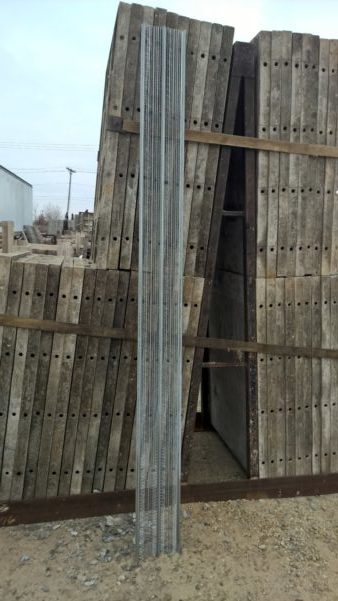
At walkout wall step-ups, when we pour monolithic lower walls, directly adjacent to or in-line with taller walls, hydrostatic pressure has a tendency to force concrete to squeeze over the lower form. This causes the upper wall concrete to sag in the formwork. The more the concrete in the upper wall is worked, the more the concrete escapes over the lower wall form. Our typical application for this is a 3-foot lower wall and a 12-foot full height wall in our market.
The Solution:
Years ago, we started using expanded metal formwork, like that used in one-sided wall construction, to create a shut-off where the short and tall wall meet. Initially we had to cut the large sheets to fit inside our forms, but now we are able to special order the expanded metal in 8-inch by 8-foot tall pieces. We now simply cut the 8-foot piece, with a gas-powered saw, to the height of our lower wall, and wire the expanded metal to the form ties. Extra (we call them dummy ties) are added for more support. We also use shears to cut small holes in the expanded metal, so rebar can run continuous through the shut-off, maintaining reinforcement continuity between the two wall sections. Since the expanded metal is placed below grade, there has been no reason to use waterstop, in this application.
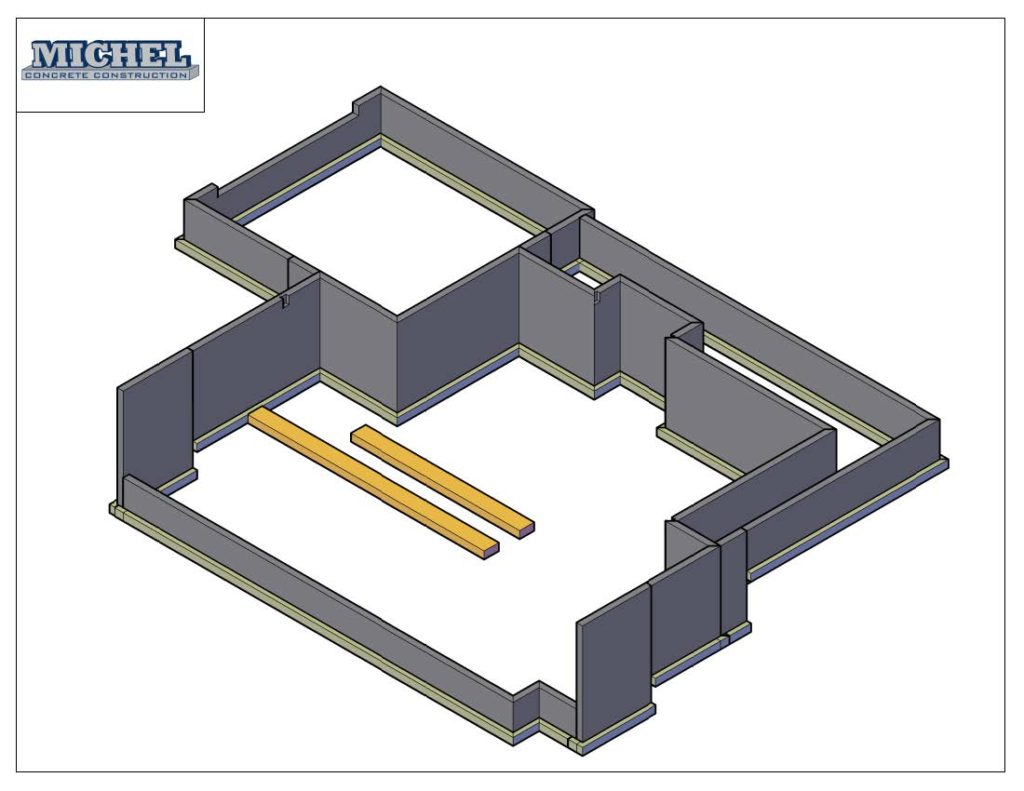
Michel Concrete provides these images to describe the typical location of their step-down condition and the actions that set up the need for the solution. Above shows a 3-d model typically used in their project communications shows the customer what concrete features they are quoting and how they will go about it. Lower right the crew is working at the elevation of the upper wall according to their Fall Protection Plan and trying to control the mounting pressure on the step down to the lower wall. Lower left is the view from the stepdown wall back to the taller wall where flow-stop material holds back the fluid pressure while allowing reinforcement continuity to exist.

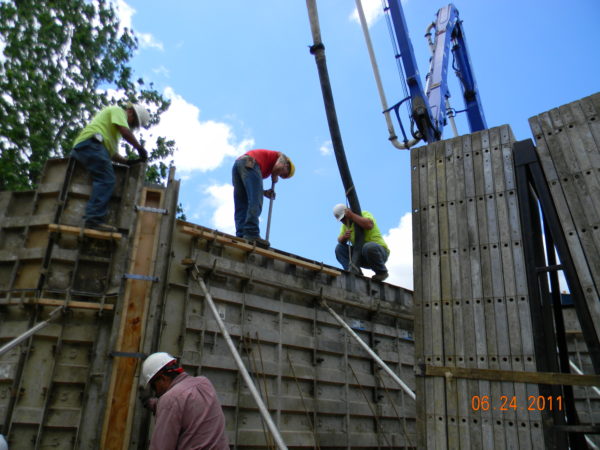
Concrete Contractors Should Use the New (and Better) I-9 Form
Effective January 22, all US employers must be using the new version of Form I-9.
Although in its simplest format, the form is relatively unchanged, contractors can and should download the form from the US Citizenship and Immigration Services webpage and use the new form on a computer. Use this link: https://www.uscis.gov/i-9
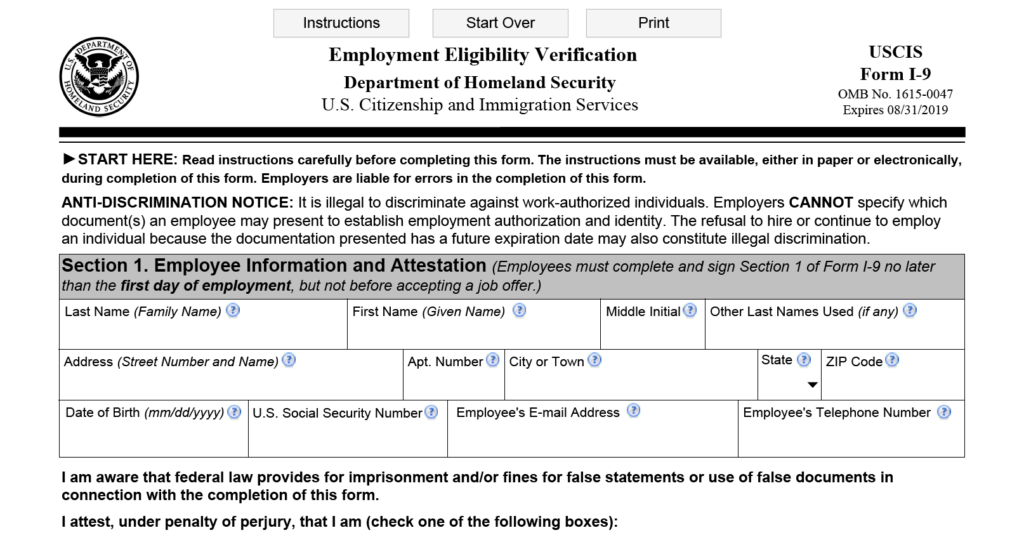
There are several reasons why this will work to your advantage. First, the new form will help ensure that you complete the form correctly and avoid common errors. This is so because the form incorporates “built-in” help when you use the computer version. For example, for nearly every blank of the form there is an online help feature accessible through the question mark next to the field title. In addition, if you scroll over a field after a few seconds a help box appears giving advice about what information goes in that field and, more important, how to format that information. Also, using the computer version of the form gives you instantaneous access to the complete 15 pages of instructions, which gives even more detail about how to properly complete the form.
The online version of the form also does some of the work for you. For example, when the employee is completing Section 1 of the form and selects an immigration status, that status automatically is carried forward in Section 2 of the form. There, your choice of documents will automatically be chosen. For example, an employee who checks that he or she is a lawful permanent resident in Section 1, you will not be given a US passport as a document choice in List A of Section 2. Similarly, when completing Section 2 for a US citizen, you should not see a choice for Employment Authorization Document.
The online version of the form also has some error checking built-in. If a date is entered in the incorrect format, you will be alerted and given help regarding the formatting issue. Selecting from the document lists ensures that you do not accept or try to record documents that are not permissible. An overarching error checking system exists in the form of a “click to finish” button at the end of each section of the form. Clicking this button results in a powerful review of the entire content of that section, followed by a field by field correction process. When you have corrected the form, you are encouraged to print it out for signature and storage.
That is one disadvantage to using this version of the form. You cannot save the data or the completed form online. Still, the new version of the form goes a long way to help ensure that your form is correct and complete. Once you have printed out the form and it is signed, you then can consider electronic storage if desired.
The new form also has a new area in Section 2 for additional information relevant to the I-9 process. For example, you can use this area to record termination dates and form retention dates. Also, new to this version is the ability to record more than one Preparer/Translator if necessary. There is a separate supplement that can be used for this purpose and you can use it multiple times, so in theory any number of persons can assist the employee in completing Section 1 of the form.
The system is still not perfect. No changes have been made to the document list, which is attached to the online version of the form. Thus, the list still has things in the wrong columns and way too many documents. On the other hand, the document list attachment is a little bit more helpful in terms of understanding what the documents are.
The instructions misstate the regulations with respect to the timeliness of completion issue. The instructions have a clear example that gives you four days to complete the form. You are told that for someone who starts work on Monday, you must examine documents and complete Section 2 by the close of business Thursday. That is contrary to the regulations which define “hire” as the commencement of work for pay and require completion of Section 2 “within three business days of the hire.”
You can still use the “paper” version of the form. You can download that from the same website and photocopy it as necessary. It is hard to ignore all the good help that comes built-in to the new version, though. Try it and see. You can always go back to the “paper” version.

ABOUT THE AUTHOR
David C. Whitlock has been a lawyer for over 25 years. He specializes in Labor and Employment Law representing companies as they deal with complex federal, state, and local laws, regulations, and ordinances. If you have an employment-related compliance question, he can help you. David also spends a large amount of time helping companies employ foreign workers under the US immigration system. Business immigration is a complex and technical law practice, but David has excelled at it for over 25 years. Contact David Whitlock at 404-626-7011 (phone), davidcwhitlock@gmail.com (email) or visit his website, www.davidcwhitlock.com. David can also be met easily at CFA Convention each summer.
Featured at Concrete Foundations 2017
David Whitlock will once again be a featured speaker during Concrete Foundations Convention to be held in Nashville, TN this July. His focus will be the myriad of executive orders and the impact of the new administration on small businesses. His focus will be on issues including:
- Suspension of the U.S. refugee program and subsequent legal action.
- Mandatory Regulatory Reform Task Forces for all agencies to evaluate regulations.
- Establishment of three D.o.J. task forces to fight drug cartels, reduce violent crime and reduce attacks against police.
- Treasury secretary review of the 2010 Dodd-Frank financial regulatory law.
- Order instructing agencies that whenever they introduce a regulation, they must first abolish two others.
- Restructure of the National Security Council and the Homeland Security Council.
- Lengthening of ban on administration officials working as lobbyists.
- Border security and immigration enforcement including: the authorization of a U.S.-Mexico border wall
- 30-day review of military readiness.
- Reviving the Keystone XL pipeline and Dakota Access pipelines.
- Withdrawing from the Trans-Pacific Partnership trade deal.
- Hiring freeze for some federal government workers.
- Easing “regulatory burdens” of ObamaCare.
ISO: Soff-Cut X50 Husquavarna Hand Held Saw
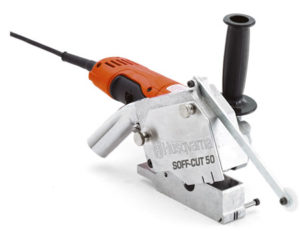 CFA Member looking to find a new or used (good shape) 5″ Soff-Cut Model 50 Hand-Held Ultra Early Entry Slab Saw as manufactured by Husquavarna. If you have any information to pass on to this member, contact CFA Headquarters by emailing Exec. Dir. James Baty.
CFA Member looking to find a new or used (good shape) 5″ Soff-Cut Model 50 Hand-Held Ultra Early Entry Slab Saw as manufactured by Husquavarna. If you have any information to pass on to this member, contact CFA Headquarters by emailing Exec. Dir. James Baty.

